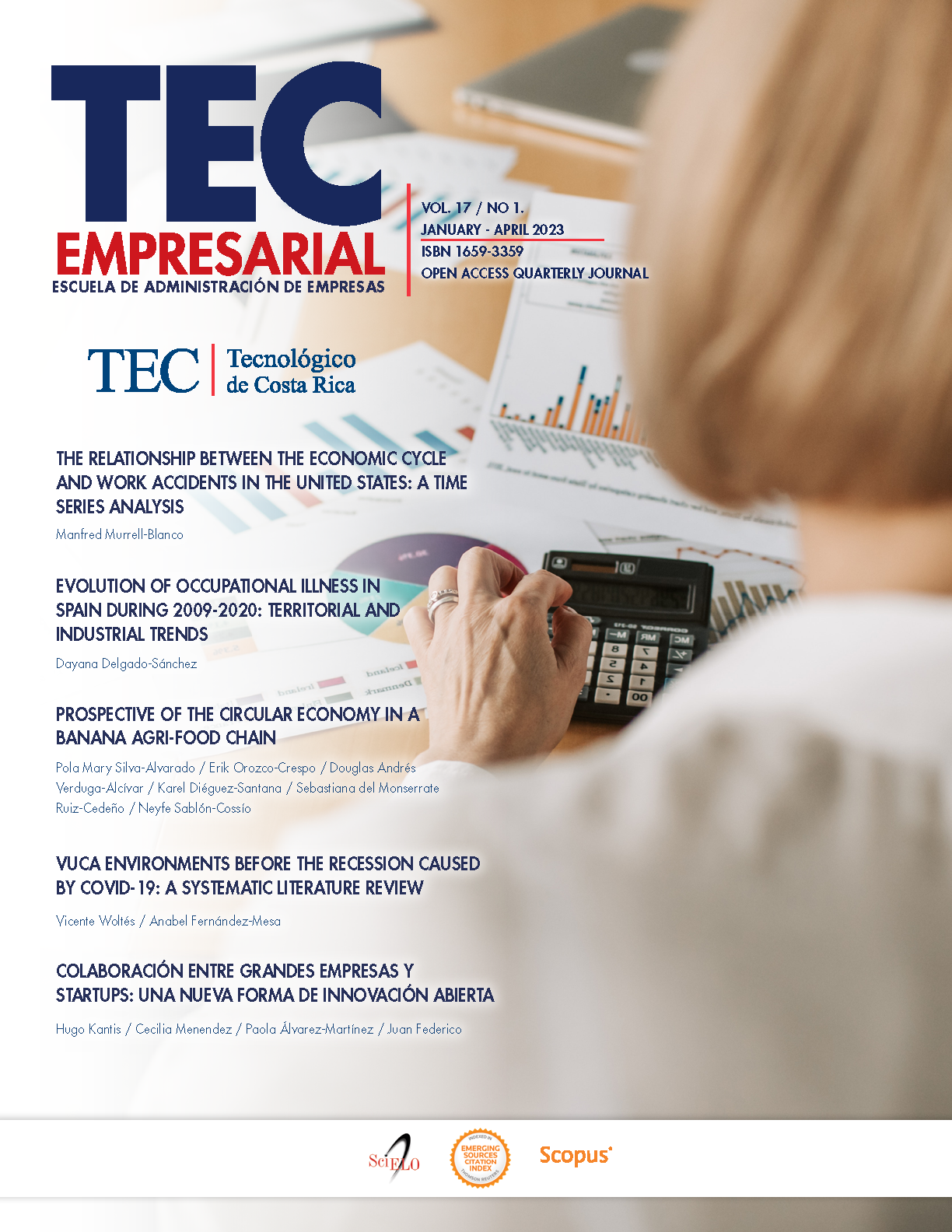Prospective of the circular economy in a banana agri-food chain
Main Article Content
Abstract
The circular economy (CE) has been adopted as an alternative to the linear economic model, since it transforms the way products are designed and consumed. Agri-food chains are key to ensuring the transition to a sustainable development model in line with the principles of CE. This study sought to implement the concepts of circular economy at the Ecuador's banana production chain, through the design of prospective from the exhaustive diagnosis of the main processes of the chain. The research was conducted from 2020 to 2022. The studied checklist included 91 items grouped into nine dimensions: source or supply of materials, design, manufacturing, economic circle, distribution and sales, consumption and use, 4R, re-manufacturing, and sustainability. A medium circular economy level (CEL) was evaluated (2.69 points out of 5). Two machine learning techniques (MLTs) were also applied support vector machine (SVM), (with three types of kernel: radial, linear and polynomial) and a neural network (NN). In relation to the Spearman correlation coefficients of the application of the techniques to the study cases, they were higher than 0.90. The most reliable was the SVM Regression-Linear Kernel, which had a coefficient close to 1. Finally, various value-adding options are proposed in order to take advantage of the large amount of waste generated in the banana production system. The proposed options include value-augmentation processes, ranging from organic fertilizers, biofuels, materials for wastewater treatment, and the production of bioplastics and nanoparticles, which can be implemented using the CE approach.
Article Details
The digital version of the journal is registered under the BY-NC-ND 4.0 Creative Commons license. Therefore, this work may be copy and redistribute the material in any medium or format, as long as you give appropriate credit, provide a link to the license, and indicate if changes were made. You may do so in any reasonable manner, but not in any way that suggests the licensor endorses you or your use.
The authors keep the copyright and give the journal the right of the first publication and the possibility of editing, reproducing, distributing, exhibiting and communicating in the country and abroad through printed and electronic means. On the other hand, the author declares to assume the commitment on any litigation or claim related to the rights of intellectual property, exonerating of responsibility to the Business School of the Costa Rica Institute of Technology.


